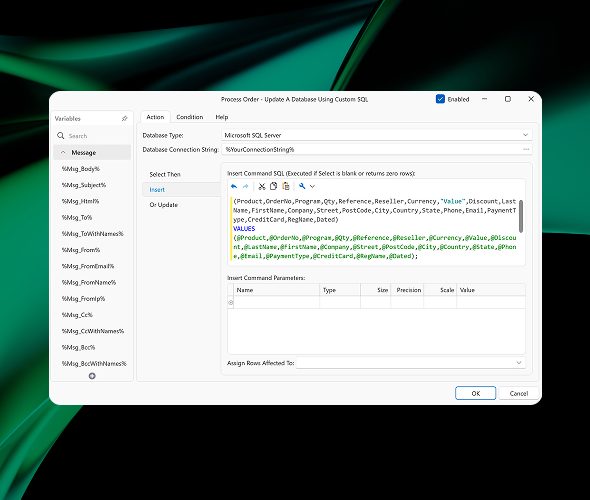Database automation
ThinkAutomation offers intuitive database automation, allowing you to monitor changes and automate data entry, updates, and queries.
Database automation in business workflows
What if you could automatically insert, update, or get data without lifting a finger? ThinkAutomation intelligently extracts and maps data to your database records, ensuring everything is accurate and runs smoothly.
Workflows can be triggered by…
✔ Changes in your database
✔ Incoming emails
✔ Web form submissions
✔ File modifications
✔ API requests
AI driven database automation
Supercharge your database automation with AI-powered intelligence using ThinkAutomation. We help you automatically process incoming data, then use AI to classify, analyse, or extract insights before your database is updated.
For example, AI can capture important details from any text, summarise reports before saving them, or even translate entries for databases that use multiple languages. You can even use AI to ask your database question, and it will write and run the right code for you.
By utilising AI database automation you can handle data faster, be more accurate, and gain deeper insights, without the manual work.

How to automate your database
Automate your database by triggering workflows directly from database changes in ThinkAutomation.
This means your business systems can react instantly the moment data is added, updated, or deleted.
You can configure workflows to monitor specific tables or fields. When a relevant change occurs, ThinkAutomation immediately executes a predefined set of actions.
Perform parameterised queries
ThinkAutomation reads records from a database at scheduled intervals.
Retrieve results
Query results are checked against your pre-defined rules and conditions.
Execute automations
Triggered actions will then be performed against each record returned.
Unlimited Workflow Possibilities
Database automation can incorporate as many lookups and actions as you like. This could be anything from simple, scheduled data clean-ups and data extractions to complex, timed communication workflows. You build your database rules using straightforward “if this, then that” logic. For example…
| Select | If | Then |
|---|---|---|
| All new accounts created in the last 24 hours. | The customer has given contact consent. | Send them a welcome email. |
| Select all records created over 5 years ago. | The account is still active. | Send the customer a loyalty offer. |
| Select all customers located within the UK. | The contact number does not begin with +44. | Change the number to the correct format. |
Let's Connect
ThinkAutomation customers feel the magic of automation software every day. Ready to join them?
UK: 0330 0882 943
US: (833) 932 4638
sales@parkersoftware.com
